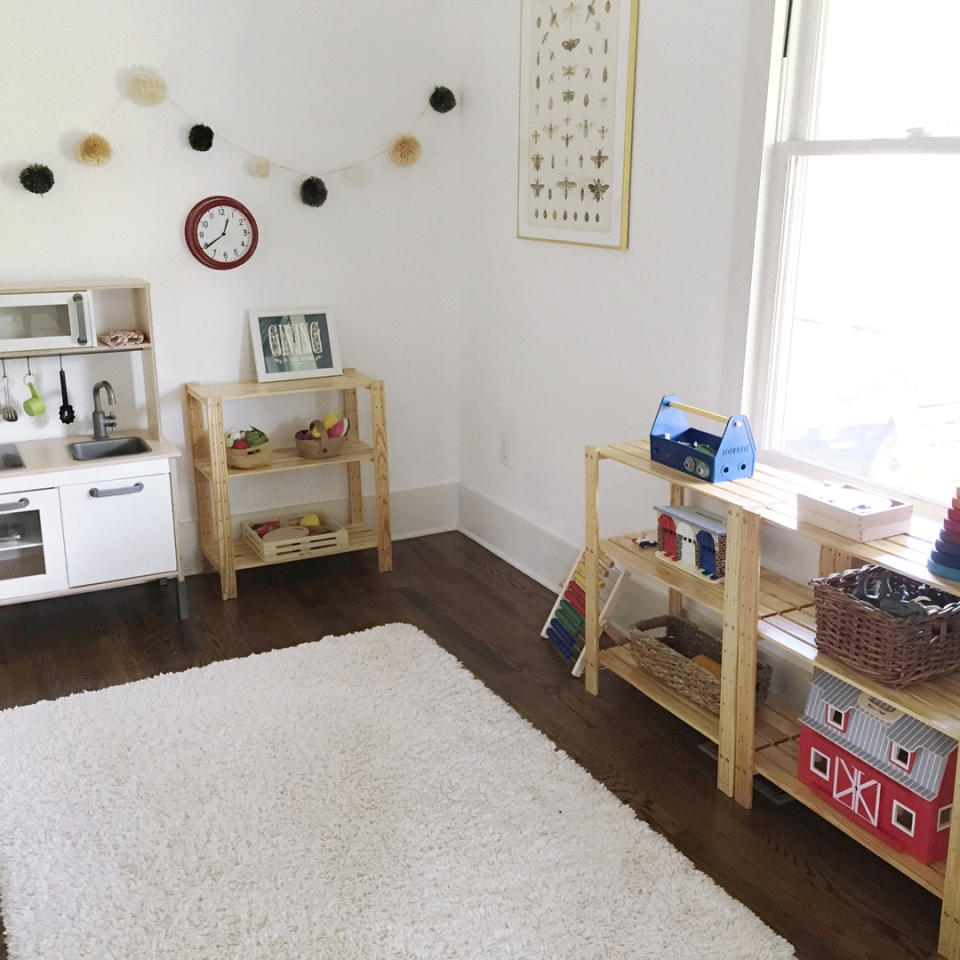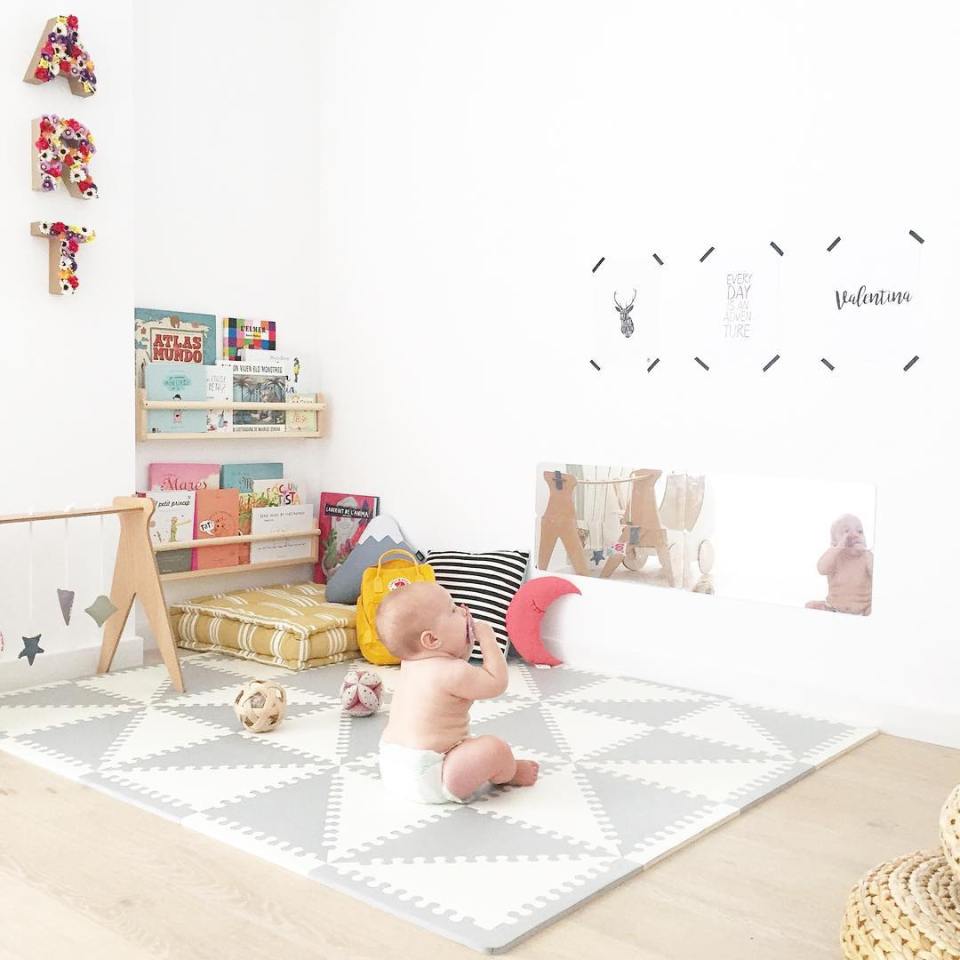
How To Create a Montessori Room – The Prepared Environment From 1 -3 Years
Starting Montessori with your child can sometimes seem overwhelming! One crucially important aspect of doing ‘Montessori At Home’ is establishing a Prepared Environment. Since infants and children’s minds are absorbing everything in their environment we must always try to reflect in our Montessori Space the ideals we wish to be embodied in their character. An environment that is chaotic, loud, cluttered and stressful will encourage a child’s mind to be disordered, distracted and prone to anxiety.

Instagram and Pinterest are full of inspiring posts for decorating you room and are a brilliant place to start your planning. This month we are (finally!) putting together Alfie’s room. As we are creating a space that will hopefully last for many years and be used by many children we are keeping the following Montessori principles in mind;
Freedom
The room should allow the child to be as free as possible (physically and mentally) so that they may pursue their own interests and motivations. In it they should be free to move about safely, free to choose a toy or piece of work, free to meet their own practical needs, this means that a Montessori space may never be ‘finished’ but rather constantly evolving according to the needs of the child. Fulfilling this demand will look differently depending on your child’s developmental stage and interests, for example; a baby needs a comfortable floor space and a mirror, an infant will benefit from a pull up bar, child sized seating, shelving and equipment is always essential.

Ordered
An ordered and well structured environment allows for greater independence and freedom since the child learns to understand how their environment works and doesn’t need to rely on an adult for guidance. Between the age 1 and 3 years the child enters the Sensitive Period for Order which is intrinsically linked to their developing sense of reason. A room should be simple and uncluttered with a logical layout. If order is not present in the environment then we are denying our children a significant psychological developmental milestone. The below image is from the inspiring Instagram account of Our Montessori Story.

Beautiful
This is one of my favourite aspects of Montessori! Aiming for a tranquil and attractive environment is a good starting point. I frequently see Montessori rooms with white walls, beechwood furniture and three pictures on the wall, beauty is of course subjective but if children are absorbing their environment than surely we want them to absorb a creative and vibrant world. If you follow us on Instagram you’ll know that our home is slightly crazy (jungle wallpaper and llama lights!) so making Alfie a beige and beech room would have aesthetically ostracized him! The wonderful thing about Montessori is that it is fully responsive to meet the demands of the family. Below featured image from Estoreta.

Natural
Wood, metal, glass, cottons are all frequently used in a Montessori environment. The best thing about natural materials is they are far more responsive than plastic, they warm in your hand, they smooth down with use, they chip, scratch and tarnish making them intricate and beautiful objects in their own right. Maria Montessori prized nature and encouraged teachers to incorporate as much outdoor time as they can, for this reason natural light and low windows are a particularly prized addition in the Montessori room. If you can incorporate access to a safe outdoor area even better, as Maria herself said “it is also necessary for his psychical life to place the soul of the child in contact with creation, in order that he may lay up for himself treasure from the directly educating forces of living nature” Featured image is from Casa Mia Montessori.

Once your room has been set up to be fully accessible so as to inspire the child to explore it is ready to receive the montessori materials. A range of practical, sensory and cognitive materials in a range of difficulties placed in this kind of environment will allow the child to stretch to their potential. Happy Decorating!
To see all the latest posts from Fred, Ted and company join us on Facebook







0 Comments
Gunita
Here is shop where you can find such house bed as in article
https://www.etsy.com/shop/SweetHOMEfromwood?ref=hdr_shop_menu
Mrs Ted
Oh thanks! Very handy to know! x